There are so many things to say and write on the subject of war and peace. Obviously, some topics are easier than others. And, of course, there are some characters who have become a point of reference in our history.
Discovering Mandela

Nelson Mandela is one of these great minds and souls; he was a political activist. He was the first black South African president and the first democratically elected candidate.
His administration focused on undoing the legacy of racial segregation through addressing latent racism and promoting racial reconciliation.
A task that will always (past, present, and future) be titanic and in many cases unachievable. Politically, he was an African nationalist and democratic socialist, serving as president of the African National Congress (ANC) party from 1991 to 1997. Internationally, Mandela was Secretary-General of the Non-Aligned Movement 1998-1999.
In South Africa, he is highly respected. He is commonly referred to by the name Madiba, or Tata (father), which comes from his Xhosa ethnic clan. He is often described as the “Father of the Nation”.
Thus, this man, like many other activists, deserves a day of recognition for his actions, for having the strength to remain constant to his belief system, even when everything seemed to be crumbling around him. Nelson Mandela International Day was created in recognition of Nelson Mandela’s birthday: July 18, 2009.
We must work together for national reconciliation, for the creation of a nation, for the birth of a new world. – N. Mandela –
This day was born after a call made by Mandela himself the year before. The call was crystal clear and when he said “it is now in your hands”. He suggested that the next generation should shoulder the burden of leadership to address the world’s social injustices.
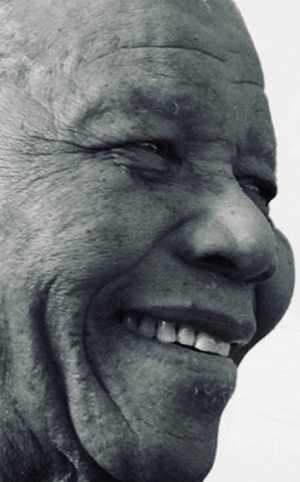
Indeed, today is much more than a celebration of Madiba’s life and legacy, it is a global movement to honor his life’s work and act to change and improve the world.
Solkes: Why is it important for the MFN to exist?
N.Naidoo, NMF member: Nelson Mandela established this foundation to continue his life’s work towards deepening democracy, peace, and human rights. These issues continue to be critical in South Africa and around the world.
Solkes: What are the short, medium, and long-term plans of the foundation?
N.Naidoo, NMF member: The foundation plans to continue the work done by Nelson Mandela and make a significant change to promote peace, democracy, and human rights.
History
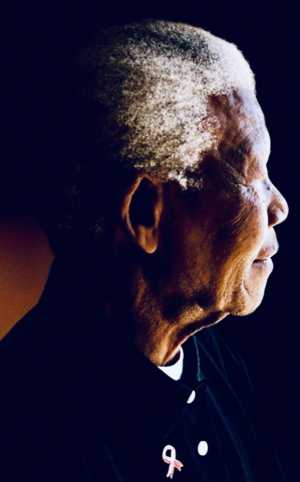
After getting these answers it was necessary to soak in a little more about him. Nelson Mandela was born on July 18, 1918, in Mvezo Village, Umata (at that time part of the Cape Province of South Africa). At that time he was baptized under the Methodist belief, and so he receives the name “Nelson”.
Mandela began his studies as a Bachelor of Arts at the University College of Fort Hare, but did not finish his degree there as he was expelled for joining a student protest. As fate would have it, he decided to study law at the University of Witwatersrand.
At the time, Mandela was the only African student, and although racism was all around him, he joined European libertarians and communists, Jews and Indian students alike. However, he did not complete his studies and left the university in 1952.
Trouble begins
During the 1940s and 1950s, he rose rapidly through the rungs of the ANC (African National Congress), was arrested, suffered police harassment, and had his protests banned.
In 1943, Mandela met Anton Lembede; an African nationalist who strongly rejected the racist front against colonialism, imperialism, and the communist alliance. Mandela argued that black Africans should be fully independent in their struggle for self-determined politics.
When a person is denied the possibility of living as he believes he should, the only option he has is to live outside the law. -N.Mandela-
Naturally, his influence in the ANC increased as time went on.
He then began to engage (with the help of his supporters) in direct action against racial segregation, such as boycotts and protests, which were influenced by the tactics of South Africa’s Indian community.
In late 1952, Mandela was banned for the first time from protesting or demonstrating. Because of this restriction, he was only allowed to be seen in secret while the Freedom Charter was passed in Kliptown on June 26, 1955. On July 30, 1952, Mandela was arrested under the Suppression of Communism Act and was tried along with the 21 defendants in Johannesburg. Found guilty of “communist statuary,” his nine-month sentence of hard labor was suspended for two years.
Mandela was given a six-month suspension in December from attending meetings or speaking to more than one person at a time, which rendered his chairmanship of the Transvaal ANC useless, and during this period the Defiance Campaign ended.
In August 1953, Mandela and Oliver Tambo opened their own law firm. It was the only African law firm operating in the country. Evidently, it was popular with blacks who were severely rejected and disadvantaged by the authorities.

On December 5, 1956, Mandela was arrested along with most of the ANC Executives for “high treason” against the state.
It was only at this point that his story began to unfold. And, it seems essential to understand a little more about the mission of the Nelson Mandela Foundation: a society that remembers the past listens to all its voices, and pursues social justice.
The fundamental work they do is based on spreading dynamic information about Mandela’s life and times around the world. It also aims to promote finding solutions to critical social problems through dialogue.
Nelson Mandela Foundation
As if that were not enough, the NMF wishes to contribute towards a just society by promoting the vision and work of its founder and organizing dialogues on critical issues in our society.
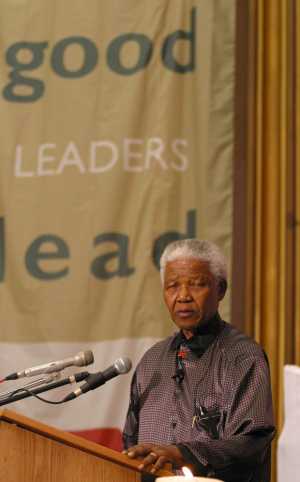
Continuing our interview.
Solkes: The NMF claims to promote the vision of equality for all that Mandela held during his lifetime. How do you intend to achieve this?
N.Naidoo: We do this through programmed dialogues, research, and Nelson Mandela Day.
Solkes: How do you continue to work and keep alive the basic fundamentals at MFN?
N.Naidoo: We work together with academic institutions, NGOs, and other civil society organizations that share our ideals.
Going back to your past and roots I realize that after a short time, the ANC was banned (1960).
At this time the group went underground and the military wing Umkhonto we Sizwe (English translation: Spear of the Nation) was formed.
The situation exceeded tension, Africans burned their legally binding permits. In solidarity, Mandela publicly burned his permit and riots broke out all over South Africa. These acts prompted the government to declare martial law.
Our society needs to re-establish a culture of interest.
– N.Mandela –
In 1962, Mandela was sentenced to five years in prison for traveling without valid documents while leaving Africa and inciting Africans to protest. Two years later, during his arrest in 1964, he was charged with treason and sentenced to life imprisonment for criticizing racial segregation in a memorable four-and-a-half-hour speech.
Nelson Mandela ultimately spent 27 years in prison. At first on Robben Island, then in Pollsmoor Prison and Vistor Verster. An international campaign promoted his release, which was granted in 1990 in the midst of civil conflict.
Mandela joined negotiations with President Frederik de Klerk to abolish racial segregation and establish multiracial elections in 1994, in which Mandel led the ANC to victory and became South Africa’s first black president.
As if that were not enough, he became the leader of the Government of National Unity, which enacted a new South African constitution Mandela also created the Truth and Reconciliation Commission to investigate human rights violations.
His administration established measures to promote land reform, fight poverty and expand health services. Internationally, he intervened as a mediator between Libya and the United Kingdom over the Pan Am Flight 103 bombings and oversaw the military intervention in Lesotho.

Needless to say, Mandela was a controversial figure for much of his life. According to critics, he was condemned as a communist terrorist. Some of the awards he won include the Nobel Peace Prize in 1993, the Presidential Medal of Freedom, and the Lenin Peace Prize of the Soviet Union.
Life in Prison
Living in a prison meant the same as living in the worst place in southern Africa – Robben Island. ANC prisoners were classified as “D”, which are the most dangerous prisoners with the least rights. The conditions were horrible, the prison system was meant to break the spirit of every person there. Prisoners spent most of their time in a mine, where they were forced to work very hard.
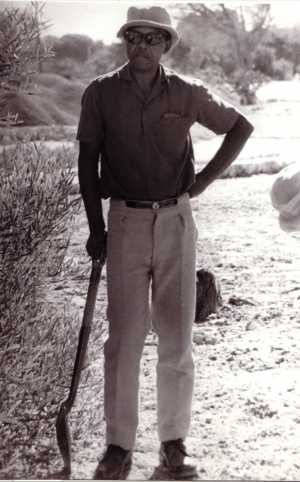
They could not read newspapers or magazines. They were kept in cells with hay rugs and thin blankets as beds and iron buckets as toilets. The prisoners were given thin khaki shirts and a pair of shorts to wear, even during the winter.
Being the leader of the group, Nelson received much harsher treatment than the others. He was kept 23 hours in his cell every day, with only the illumination of a lamp.
He was allowed only one visit every six months and was granted the right to write and receive a letter every six months. However, the letters received were examined by the guard; and the guard would edit out the parts he considered dangerous or that he could easily erase.
Solkes: Since the creation of the foundation, have you seen more change in South Africa?
N.Naidoo: South Africa is a small but growing democracy. It is true that we face many challenges but we have also achieved changes that have transformed society.
It always seems impossible until it’s done. -N.Mandela-
From 1985 onwards, he rejected several possibilities of “conditional” release which would have imposed limitations on his political activities. His imprisonment enhanced his political status and this led to the worldwide campaign for his release.
During those 27 years Mandela spent in prison, he was hidden from the world while mining limestone and harvesting seaweed; his silent example of suffering was one of the pressures on the government.
A leader is a man who studies the norms of a group that values what is most precious. Our society had the opportunity to see one of the world’s greatest leaders. There is no doubt about his leadership traits.
A revolutionary leader
To conclude, Nelson Mandela is considered a revolutionary leader who has the ability to empower and motivate other people using the democratic process and his strong sense of compromise.
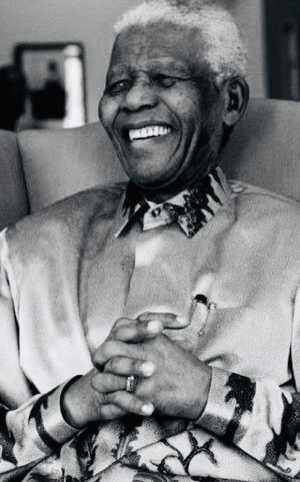
He believed in democracy, equality, and learning. Despite constant prodding, he never responded to racism for racism’s sake.
Mandela has always been a source of inspiration in South Africa and the world to all who opposed deprivation and oppression. The nearly three decades he spent in prison represent an example of struggle.
Nelson Mandela was a man who was able to stand up and fight. He achieved something great: a movement of immediate organizational consciousness. Mandela’s iconic and exemplary status does not result from his ability to inspire or motivate; it is due to the fact that his actions have endured over time. We can only hope that people will remember his example and teachings in times of crisis when all seems dark and empty, and we will unite by any means necessary to win their freedom.


